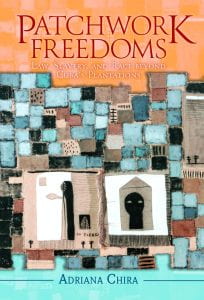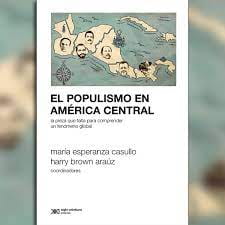A Review of Patchwork Freedoms

Patchwork Freedoms: Law, Slavery and Race beyond Cuba’s Plantations by Adriana Chira, Cambridge University Press, 2022
Adriana Chira’s Patchwork Freedoms is a refreshening contribution to the historiography of the African Diaspora in Latin America offering both genuinely new data and new interpretations. This book becomes even more important in recent years, when U.S.-based audiences, narratives and media have increasingly hegemonic effects on histories of the slave trade, slavery, and abolition told elsewhere.
I have learnt a lot from Patchwork Freedoms, which provides gratifying surprises on how to combine the methodologies and perspectives from legal history, agrarian studies and scholarship on gender. This is not a book based on rimbombantes (or bombastic) assertions, but on the methodical examination of social practice, particularly rural colonial litigations regarding freedom and property rights, which contributes to rewrite the revolutionary tradition of Latin America. Perhaps the most innovative parts, which can be applied to other regions of the 19th-century Americas, examine the intersections of freedom, property rights and agrarian history.
The core of this book is the analysis of freedom-making through custom in 19th-century Santiago de Cuba, and the changes in how litigants deployed these customs—from cases seeking freedom based on loyalty to the crown to those based on merit and property. Chira tracks custom through testaments, freedom suits, manumission papers, and connects these claims with parish records as kinship and community were key elements for developing and asserting these customs.
The first three chapters introduce the readers to Santiago de Cuba, while surveying the social practices prior to the mid 19th-century studied by Chira in the second part of the book, the core of her work. Thus, we learned about both eastern Cuba in general and the province of Santiago de Cuba in particular before 1800, while examining the experiences of resistance within accommodation of the free Black community of El Cobre (among others) and the creation of local instances of autonomy. In the late 18th century, differences between colonial elites in Santiago left some openings for enslaved and free people of African ancestry, in which civil status (freedom) sometimes trumped color status in judicial cases.
In chapter two, we learn about the impact of refugees from Saint Domingue (currently Haiti) on Santiago’s politics and economy at the beginning of a boom of the coffee economy, which took place as war and revolution forged a free and independent Haiti. We also discover the strategies of families of people of African ancestry for seeking freedom and autonomy as well. In this chapter, Chira finds examples of colonial administrators who considered that property ownership trumped African descent in relation to the relocation of smallholders of African ancestry from Saint Domingue to Santiago, since these smallholders of color could act as buffer, or pacifying intermediaries, in relation to communities of self-liberated slaves or palenqueros. Chira rescues a very interesting moment in the 1790s when some colonial administrators in eastern Cuba saw the expansion of plantations as equal to the expansion of war, which led these officers to benefit coffee smallholders, who also cultivated by using slave labor (70-72).
Chapter three reveals “prudential policies that allowed for some rights and resource redistribution against birth status hierarchies.” (107) This, in turn, made room for the strategies of manumission of the enslaved during the first half of the 19th century. While mentioning elites’ perspectives, the chapter focuses on the strategies of the enslaved and free people of African ancestry, particularly to show how familial and kinship relations in general were central to keep people on coffee plantations.
Chira develops her central argument on the importance of custom in chapter four, where she shows how the strategies for manumission increasingly became merit-based entitlements. Scholars usually miss the grey area of rights for partially and completely manumitted people in the Spanish Americas. Building on Michelle McKinley’s Fractional Freedoms, Chira conducts a thorough revision of Spanish language primary sources and historiography on manumission, como debe ser, in order to build her argument. I learned a lot, from the Cuban usage of “derecho patrio” vs the laws regulating slavery coming from Ancient Rome, and the mid-19th century ways of turning the custom of coartación (related to the ways captives could obtain freedom) into positive law to secure social peace, to the right to use saving accounts by enslaved people in Santiago to secure their manumission (153). But this chapter also reveals ”bottom-up” perspectives, by showing the social history behind freedom litigations and how merit became a central category in the language supporting litigants who had negotiated their freedom in oral agreements.
Chira provides an innovative analysis about the affective labor of the enslaved, the care provided by the enslaved to enslavers, and how the enslaved monetized this category, which was also endorsed by community testimony during court litigations. This was a gendered legal claim with many different outcomes in the relationship between enslaved women and male enslavers. Chira provides a very nuanced and complex analysis on how sex, rape and the expectations (by colonial elites) of a wife’s respectability played in different cases with different consequences.
Chapter five focuses on how property ownership became central for free people of African descent, particularly to show how “color status, like freedom-related rights, became articulated through practice, not through abstractions.” (183) Chira shows that even during a period of increased repression led by colonial authorities, in the aftermath of La Escalera conspiracy and the related slave insurgency, manumission rates actually increased in Santiago de Cuba through the expansion of free-colored rural smallholders and peasantry, el campesinado. As this peasantry was significantly African-born, Chira reflects on African understandings of slavery and kinship in shaping the strategies related to captivity and freedom in rural Santiago.
Chira examines strategies of self-fashioning, bending colonial categories of status and color, as the ownership of property became one of the bases for Afro-descendants to deploy strategies of differentiation based on color and status. Some of these men and women occupied an in-between status in the notarial and legal paperwork, where they did not figure as “moreno” (denoting color) or “Don” (denoting respectively and thus whiteness). While these strategies may conflict with modern U.S. understandings of race and belonging, these findings are consistent and congruent with other scholars examining 19th-century free populations of African ancestry from Mexico (Jorge Delgadillo’s Ph.D. Dissertation “Becoming Citizens: Afro-Mexicans, Identity, and Historical Memory in Guadalajara”) to Argentina (Erika Edwards’ Hiding in Plain Sight: Black Women, the Law, and the Making of a White Argentine Republic). In addition, the case of Basilia Echeverria, which illustrates most aspects of chapter five, is beautifully written.
The shrinking of the ability of judges to invoke custom in the late 1850s, economic reforms increasingly and negatively affecting smallholders, and political events such as the Spanish retake and then expulsion from the Dominican Republic in 1860-1865 are all combined in chapter six to contextualize the social and political effervescence in Santiago de Cuba in the five years before the beginning of the Ten Years War in 1868, the first conflict leading to the Cuban independence in 1898. Chira explores other “beginnings,” different than the Grito de Yara by Carlos Céspedes recognized by national narratives. This chapter focuses on how the previous decades of negotiations led by enslaved and free people of African ancestry shaped the local understandings of freedom and equality in the mid 1860s, when these conceptions became the banners under which this enslaved and free colored peasantry formed the core of the anti-colonial insurgency. In doing so, Chira examines the early biography of Antonio Maceo (one of the patriot leaders during the wars leading to the Cuban independence) to illustrate the connections between local kinship networks and politics.
In the conclusion, Chira draws lines of continuity from this whole study to the (second) Cuban Revolution, reflecting on the proverb of how all Cuban revolutionary things started in Santiago. Yet, Chira fleshes out this axiom by showing how the patchwork gains of people of African ancestry during the last century of slavery in Santiago shaped some characteristics of abolition and post-abolition in Cuba.
Alex Borucki is Associate Professor of History at University of California Irvine, author of From Shipmates to Soldiers: Emerging Black Identities in the Rio de la Plata, and co-editor of the Intra-American Slave Trade Database. He is currently at work on a book that explores the connections of the traffic of captive Africans, the circuits of silver, and merchant networks in the late 18-century Spanish Americas.
Related Articles
A Review of Born in Blood and Fire
The fourth edition of Born in Blood and Fire is a concise yet comprehensive account of the intriguing history of Latin America and will be followed this year by a fifth edition.
A Review of El populismo en América Latina. La pieza que falta para comprender un fenómeno global
In 1946, during a campaign event in Argentina, then-candidate for president Juan Domingo Perón formulated a slogan, “Braden or Perón,” with which he could effectively discredit his opponents and position himself as a defender of national dignity against a foreign power.
A Review of Aaron Copland in Latin America: Music and Cultural Politics
In Aaron Copland in Latin America: Music and Cultural Politics, Carol Hess provides a nuanced exploration of the Brooklyn-born composer and conductor Aaron Copland (1900–1990), who served as a cultural diplomat in Latin America during multiple tours.




